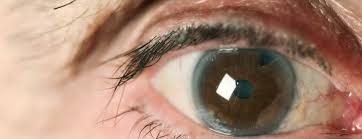
Breaking News
 $11 Trillion Quietly Moved - Americans Will Freeze & Obey When Market Collapse Hits : Chase Hughes
$11 Trillion Quietly Moved - Americans Will Freeze & Obey When Market Collapse Hits : Chase Hughes
 Econ 101 - 2026 Early Economic Forecast
Econ 101 - 2026 Early Economic Forecast
 Buy'r breaks the Blackrock monopoly- How the corporate club controls America
Buy'r breaks the Blackrock monopoly- How the corporate club controls America
 An AI Expert Warning: 6 People Are (Quietly) Deciding Humanity's Future! We Must Act Now!
An AI Expert Warning: 6 People Are (Quietly) Deciding Humanity's Future! We Must Act Now!
Top Tech News
 Build a Greenhouse HEATER that Lasts 10-15 DAYS!
Build a Greenhouse HEATER that Lasts 10-15 DAYS!
 Look at the genius idea he came up with using this tank that nobody wanted
Look at the genius idea he came up with using this tank that nobody wanted
 Latest Comet 3I Atlas Anomolies Like the Impossible 600,000 Mile Long Sunward Tail
Latest Comet 3I Atlas Anomolies Like the Impossible 600,000 Mile Long Sunward Tail
 Tesla Just Opened Its Biggest Supercharger Station Ever--And It's Powered By Solar And Batteries
Tesla Just Opened Its Biggest Supercharger Station Ever--And It's Powered By Solar And Batteries
 Your body already knows how to regrow limbs. We just haven't figured out how to turn it on yet.
Your body already knows how to regrow limbs. We just haven't figured out how to turn it on yet.
 We've wiretapped the gut-brain hotline to decode signals driving disease
We've wiretapped the gut-brain hotline to decode signals driving disease
 3D-printable concrete alternative hardens in three days, not four weeks
3D-printable concrete alternative hardens in three days, not four weeks
 Could satellite-beaming planes and airships make SpaceX's Starlink obsolete?
Could satellite-beaming planes and airships make SpaceX's Starlink obsolete?
Holistic 20-minute daily eye care routine emerges as shield against glaucoma, cataracts...

As prolonged screen time fuels a global rise in eye strain and chronic conditions like glaucoma and cataracts, a holistic 20-minute daily eye care routine is gaining traction as a proactive defense. Combining time-tested techniques from practitioners like Dr. William Bates, who pioneered palming in the early 20th century, with acupressure traditions from Traditional Chinese Medicine (TCM), the protocol addresses both modern and age-old eye health challenges. Designed for at-home use, the routine — culminating in eight targeted exercises — aims to balance muscle relaxation, blood circulation and nerve stimulation, offering a tangible response to vision threats exacerbated by technology.
Historical and scientific foundations of holistic eye care
At the heart of the routine lies Dr. William Bates' palming technique, developed over a century ago to combat tension-induced vision issues. This method, emphasizing deep relaxation, aligns with emerging evidence that eye strain stems not just from external stressors but also from internal states like anxiety. Meanwhile, TCM's acupressure focuses on meridian pathways, particularly around the eyes, to enhance qi (energy) and blood flow. For instance, the Gallbladder 20 (GB20) acupoint, massaged to relieve dryness and pressure, reflects ancient anatomical knowledge of blood vessel pathways. Modern studies support these practices: stimulating GB20, located at the base of the skull, improves vertebral artery circulation, which nourishes ocular nerve tissues.
The fusion of these traditions with contemporary research underscores the routine's versatility. Exercises such as monocular focus training target the ciliary muscles, the same structures responding to digital screens' constant focus shifts. "This mix approaches eye care systematically," explained Dr. Mei Lin, an integrative optometrist in Shanghai, "bridging herbal remedies like bilberry with targeted movements that replicate the dynamic nature of sight."
The 8-step protocol: Exercises explained
The routine begins with stimulating GB20 to reduce blood pressure obstruction and progresses to techniques tailored to specific needs:
Scalp combing: Enhances Du meridian energy flow, promoting alertness and stimulation of Bladder and Gallbladder meridians.
Monocular focus: Strengthens ciliary muscles to combat myopia, using small text to mimic the eye's natural contraction-expansion cycle.
Eye rotations (closed): Relaxes the six extrinsic eye muscles post-screen use, easing stiffness from fixed postures.
Eye squeeze and release: Lubricates dry eyes by activating tear glands, critical for glaucoma patients managing intraocular pressure.
Socket acupressure: The "Eye Bagua" zone's stimulation aids detoxification and circulation, reducing deep orbital tension.

 First totally synthetic human brain model has been realized
First totally synthetic human brain model has been realized Mach-23 potato gun to shoot satellites into space
Mach-23 potato gun to shoot satellites into space

